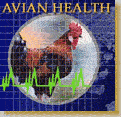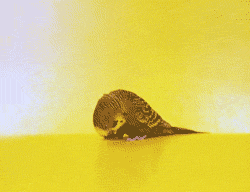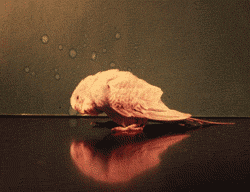 Return
to Avian Health Program Return
to Avian Health Program |
|||
| Disease Recognition Recognizing disease in your birds is sometimes obvious; by the time the disease is obvious, it is too late. Therefore, it is very important to know your bird's normal behavior by observing them. The fact is, it's difficult to recognize when your bird is sick, especially in the early phases of illness. Birds are experts at hiding their symptoms of disease; a defense mechanism to insure their survival in the wild. Therefore, they often do not appear ill until their disease state is advanced. A trained eye or ear can recognize the subtle symptoms of early disease. Signs and Symptoms of Disease If your birds exhibit any of these signs contact your avian veterinarian or state, federal or local agriculture office: Respiratory: Frequent sneezing, gasping for air, coughing, discharge from mouth nose or eyes, swollen eyelids or labored breathing. Gastro Intestinal: Weight loss, loss of muscle mass from the breast bone, decreased appetite or water consumption, change in the color or consistency of droppings, soiled or pasted vent, vomiting or regurgitation of feed or water. Neurological: Circling, twisting of the head and neck and partial or complete paralysis. Change in physical appearance: Failure to replace feathers, deformed or persistently ruffled feathers, drooping wings, failure to stand erect or perch, swollen joints, or deformities on legs, toes or wings. Change in character or behavior: Inactivity.vocalization stops or quieter behavior, eyes closed most of the time. Urinary infections: Drinking large amounts of water, runny droppings (due to all the liquid in the droppings), weight loss in spite of normal food intake. Reproductive infections of concern to breeders: Problems with egg laying, fertility of eggs or neonatal infections. |
|||
|
|||
| Sample Question | |||
| It is important to understand your bird's normal behavior in order to recognize when it is sick. | |||
| a) True b) False |
|||
| What are the means of disease transmission? | |||

